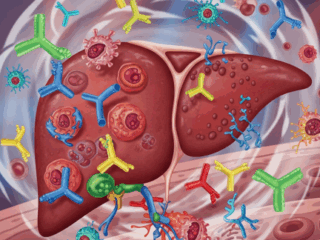
Nine times out of ten, the biggest breakthrough in a cell‑biology lab doesn’t arrive as a spreadsheet; it flickers to life on a monitor when fluorescent tags reveal something no one has ever seen—mitochondria surfing on microtubule tracks, transcription factories pulsing like neon constellations, a virus slipping past the membrane by stealth.
For decades researchers could choose either spatial detail or temporal immediacy, but rarely both at once. That trade‑off is fading fast. Advances in optics, dyes, detectors, and computational reconstruction now let scientists watch living cells with near‑molecular resolution and frame rates that keep pace with biology’s fastest dances. This new era of live‑cell imaging is rewriting textbooks, accelerating drug discovery, and sparking a renaissance in mechanistic cell science.
Lighting Up the Invisible
At the heart of the revolution is fluorescence, the phenomenon in which molecules absorb light at one wavelength and emit it at another, brighter one. Attach a fluorescent protein to a receptor or splice a dye into the cytoskeleton and the formerly invisible becomes a glowing roadmap of structure and motion. The humble wide‑field epifluorescence setup has now evolved into an ecosystem of spinning‑disk confocal, light‑sheet, and lattice illumination systems that slice optical sections thinner than a micron while minimizing the energy dumped into the specimen. Modern objectives gather photons with numerical apertures once thought impossible, and ultra‑quiet sCMOS sensors swallow those photons at thousands of frames per second. A well‑tuned fluorescence microscope can image single mRNA transcripts darting through the nucleus yet keep a stem‑cell colony alive for days—a balancing act that would have astonished pioneers just two decades ago.
Super‑Resolution in Real Time
Breaking Abbe’s diffraction limit used to require fixed samples and heroic post‑processing. Techniques such as STED, PALM, and STORM pushed resolution below 50 nanometers but were too slow or phototoxic for delicate live specimens. That gap has narrowed dramatically. A 2024 Nature Methods report described adaptive‑optics lattice‑light‑sheet microscopes capturing sub‑70‑nm details inside living Drosophila embryos for more than eight hours without measurable developmental delay—proof that super‑resolution no longer needs to freeze life in order to see it clearly. The same study showed actin rings assembling around nascent synapses in milliseconds, a process previously reconstructed only from static snapshots. By merging rapid axial scanning with deconvolution algorithms running on GPU clusters, researchers now resolve protein‑protein interactions as they happen, making hypotheses about signaling kinetics testable in a single afternoon.
Keeping Cells Happy While Turning Up the Brightness
Light is both a scalpel and a sledgehammer. Pump too many photons into a live cell and reactive oxygen species form, membrane potentials drift, and the biology you were trying to observe changes under your nose. Today’s dye chemists counter this problem with fluorophores that shine harder and bleach slower; Janelia Fluor® derivatives, for instance, maintain 80 percent of their signal after ten thousand excitation cycles. On the hardware side, pulsed‑laser systems synchronize illumination to camera exposure so cells see light only when data are being collected. An NIH Research Matters feature recently highlighted how integrating local micro‑LED arrays beneath cell culture chambers reduces total light dose by up to 70 percent while preserving single‑molecule sensitivity—enabling week‑long imaging of differentiation without detectable stress responses. The guiding principle is simple: spare the photon budget, spare the cell.
Smart Optics and AI: Seeing More by Guessing Less
Raw photon counts still matter, but clever math can squeeze more truth from fewer photons. Deep‑learning models trained on paired high‑ and low‑signal images now infer missing detail, producing crisp reconstructions at a fraction of the exposure. Camera firmware running convolutional neural nets can flag subcellular events in real time—calcium sparks, vesicle fusion—triggering high‑speed capture only when something interesting occurs. The union of smart optics and AI is even closing in on label‑free fluorescence: by predicting fluorescent channels from bright‑field inputs, researchers minimize genetic manipulation and toxicity. Harvard engineers recently demonstrated “virtual staining” of cardiomyocytes, predicting mitochondrial membrane potential maps purely from phase‑contrast videos, a feat that lets labs watch physiology unfold without ever picking up a laser safety badge.
From Bench to Biotech and Beyond
Live‑cell fluorescence isn’t just academic eye candy; it has become a strategic asset for companies chasing therapies and diagnostics. High‑content screens combine robotic dish handling with automated image analysis, parsing tens of thousands of compound‑treated cells overnight. The richer the optical data, the sharper the statistical power when ranking drug candidates. Moreover, regulators are increasingly image‑literate: the FDA’s guidance on gene‑editing therapies cites morphological proof of on‑target edits as a preferred quality metric. Startups equipped with next‑level imaging pipelines can show investors and agencies visual evidence of mechanism and safety long before animal studies begin, compressing timelines and de‑risking capital.
Conclusion
The power of light, harnessed through advanced fluorescence techniques, is transforming how scientists witness life. What once required fixing, staining, and guessing can now be watched unfolding in real time at nanoscale precision. Super‑resolution that respects cell health, AI that amplifies faint signals, and optics engineered for both speed and gentleness have converged to make live‑cell imaging a staple rather than a luxury. From decoding viral entry paths to grading stem‑cell fates, fluorescence is the lens through which twenty‑first‑century biology reveals its secrets—and the labs that wield that lens with skill will set the pace of discovery for years to come.












